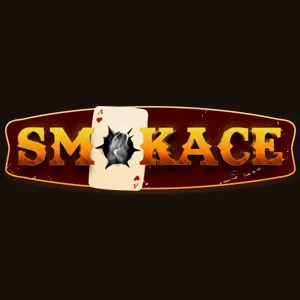8 deck blackjack odds️
Blackjack is one of the most popular casino games, known for its combination of skill and luck. The game’s complexity increases with the number of decks used. In this article, we will delve into the specifics of 8-deck blackjack, focusing on the odds and how they impact your gameplay. What is 8-Deck Blackjack? 8-deck blackjack is a variant of the classic game where eight decks of 52 cards are used instead of the standard single or double deck. This increases the total number of cards to 416, significantly altering the probabilities and strategies compared to single or double-deck games.
| Royal Wins | ||
| Luck&Luxury | ||
| Royal Wins | ||
| Elegance+Fun | ||
| Win Big Now | ||
| Luxury Play | ||
| Luck&Luxury | ||
Related information
- 8 deck blackjack odds️
- 8 Deck Blackjack Shoe
- 8 deck blackjack odds️
- 8 deck blackjack odds️
- 8 Deck Blackjack Shoe
- 8 deck blackjack odds️
- 8 Deck Blackjack Shoe
- 8 Deck Blackjack Shoe
8 deck blackjack odds️
Blackjack is one of the most popular casino games, known for its combination of skill and luck. The game’s complexity increases with the number of decks used. In this article, we will delve into the specifics of 8-deck blackjack, focusing on the odds and how they impact your gameplay.
What is 8-Deck Blackjack?
8-deck blackjack is a variant of the classic game where eight decks of 52 cards are used instead of the standard single or double deck. This increases the total number of cards to 416, significantly altering the probabilities and strategies compared to single or double-deck games.
Why Use 8 Decks?
- Reduces Card Counting: The use of multiple decks makes it more challenging for players to count cards effectively, reducing the advantage of skilled players.
- Increases House Edge: With more decks, the house edge slightly increases, making it more favorable for the casino.
- Balances Gameplay: The larger number of cards helps to balance the game, ensuring that neither the player nor the dealer has an undue advantage.
Key Odds in 8-Deck Blackjack
Understanding the odds is crucial for developing a winning strategy. Here are some of the key probabilities in 8-deck blackjack:
1. Natural Blackjack (21 on First Two Cards)
- Player Odds: Approximately 4.74%
- Dealer Odds: Approximately 4.74%
2. Busting (Going Over 21)
- Player Odds: Varies by hand, but generally around 28% for a starting hand of 12-16.
- Dealer Odds: Approximately 28% for a starting hand of 12-16.
3. Hitting vs. Standing
- Hitting on 16: Approximately 62% chance of busting.
- Standing on 16: Approximately 77% chance of losing if the dealer has 17-21.
4. Insurance Bet
- Player Odds: Approximately 13% (when the dealer shows an Ace).
- House Edge: Approximately 7.4%.
Optimal Strategies for 8-Deck Blackjack
Given the specific odds in 8-deck blackjack, certain strategies can help you maximize your chances of winning:
1. Basic Strategy
- Hard Totals: Follow the standard basic strategy chart, adjusting for the slight changes in odds due to the 8 decks.
- Soft Totals: Be cautious with soft hands, as the odds of drawing a high card are slightly lower.
- Splitting Pairs: Always split Aces and 8s. For other pairs, follow the basic strategy chart.
2. Card Counting
- Difficulty: Card counting is more challenging with 8 decks, but not impossible. Use advanced counting systems like the Hi-Lo or Omega II.
- Adjustments: Make adjustments for the increased number of decks, focusing on true counts rather than running counts.
3. Betting Strategies
- Flat Betting: Consistent betting can help manage risk, especially given the increased house edge.
- Progressive Betting: Use a progressive betting system cautiously, as the increased decks can lead to more unpredictable outcomes.
8-deck blackjack offers a unique challenge with its increased number of cards and altered odds. By understanding these odds and employing effective strategies, you can enhance your gameplay and potentially improve your chances of winning. Whether you’re a beginner or an experienced player, mastering 8-deck blackjack can add a new dimension to your blackjack experience.
8 deck blackjack odds️
Blackjack is one of the most popular casino games, known for its combination of skill and luck. The game’s rules can vary slightly depending on the number of decks used, and understanding the odds associated with an 8-deck blackjack game is crucial for both beginners and seasoned players.
What is 8-Deck Blackjack?
8-Deck Blackjack is a variation of the classic game where eight decks of 52 cards are used instead of the traditional single or double deck. This increases the total number of cards to 416, which can significantly impact the odds and strategies.
Key Features of 8-Deck Blackjack
- Number of Decks: 8 decks, totaling 416 cards.
- Dealer Rules: Typically, the dealer stands on all 17s.
- Player Options: Players can hit, stand, double down, split pairs, and sometimes take insurance.
Odds in 8-Deck Blackjack
Understanding the odds in 8-Deck Blackjack can help you make more informed decisions and potentially improve your chances of winning. Here are some key odds to consider:
1. House Edge
The house edge in 8-Deck Blackjack is generally around 0.6% to 1.0%, depending on the specific rules of the game. This edge can fluctuate based on player decisions and the rules set by the casino.
2. Blackjack Probability
- Natural Blackjack: The probability of getting a natural blackjack (an Ace and a 10-value card) is approximately 4.74%.
- Dealer’s Upcard: The dealer’s upcard can significantly influence the odds. For example:
- Dealer has an Ace: The probability of the dealer having a blackjack is about 31%.
- Dealer has a 10: The probability of the dealer having a blackjack is about 9.7%.
3. Player’s Hand Probabilities
- Busting: The probability of busting with a hard hand varies:
- 12: 31%
- 13: 39%
- 14: 56%
- 15: 58%
- 16: 62%
- 17: 69%
- 18: 77%
- 19: 85%
- 20: 92%
4. Doubling Down
Doubling down can be a powerful strategy, but it requires careful consideration of the odds:
- Doubling Down on 11: The odds are generally favorable, with a high probability of improving the hand.
- Doubling Down on 10: The odds are also good, but slightly less favorable than doubling down on 11.
5. Splitting Pairs
Splitting pairs can be advantageous, but it depends on the specific cards:
- Splitting Aces and Eights: Generally recommended.
- Splitting 2s, 3s, 7s: Depends on the dealer’s upcard.
- Splitting 4s, 5s, 6s: Generally not recommended.
Strategies for 8-Deck Blackjack
To maximize your chances in 8-Deck Blackjack, consider the following strategies:
1. Basic Strategy
Adhering to a basic strategy chart can significantly reduce the house edge. These charts provide the optimal play for every possible scenario based on your hand and the dealer’s upcard.
2. Card Counting
While more challenging in 8-Deck Blackjack due to the increased number of cards, card counting can still be effective. Techniques like the Hi-Lo system can help you keep track of the ratio of high to low cards.
3. Bankroll Management
Effective bankroll management is crucial. Set limits for your bets and stick to them to avoid significant losses.
8-Deck Blackjack offers a unique set of challenges and opportunities. By understanding the odds and employing effective strategies, you can enhance your gameplay and potentially improve your chances of winning. Whether you’re a novice or an experienced player, mastering the nuances of 8-Deck Blackjack can lead to a more enjoyable and rewarding gaming experience.

best odds to win at blackjack
Blackjack is one of the most popular casino games, known for its simplicity and relatively favorable odds compared to other table games. However, to maximize your chances of winning, it’s essential to understand the best odds and strategies involved. This article delves into the best odds to win at blackjack and provides tips to enhance your gameplay.
Understanding Blackjack Odds
Before diving into the best odds, it’s crucial to understand the basic rules and probabilities of blackjack.
Basic Rules
- Objective: Beat the dealer by having a hand value closer to 21 without going over.
- Card Values:
- Number cards (2-10) are worth their face value.
- Face cards (J, Q, K) are worth 10.
- Aces can be worth 1 or 11, depending on which value benefits the hand.
- Dealer Rules: The dealer must hit on 16 or less and stand on 17 or more.
Basic Probabilities
- Natural Blackjack (21 with two cards): Approximately 4.8% chance.
- Dealer Busting: Varies depending on the upcard:
- 2: 35.30%
- 3: 37.56%
- 4: 40.28%
- 5: 42.89%
- 6: 42.08%
- 7: 25.99%
- 8: 23.86%
- 9: 23.34%
- 10: 21.43%
- Ace: 11.65%
Best Odds to Win at Blackjack
1. Using Basic Strategy
Basic strategy is a mathematically proven method to reduce the house edge to its lowest possible point. It involves making the best decision based on your hand and the dealer’s upcard.
- Hit: Take another card.
- Stand: Keep your current hand.
- Double Down: Double your bet and receive one more card.
- Split: Split a pair into two separate hands.
2. Avoiding Side Bets
Side bets like “Insurance” and “Perfect Pairs” may seem tempting, but they significantly increase the house edge. Stick to the main game to maintain the best odds.
3. Choosing the Right Table
- Single Deck vs. Multi-Deck: Single-deck games offer better odds due to the lower number of cards in play.
- Dealer Hits on Soft 17: Look for tables where the dealer stands on all 17s, as this rule increases your odds.
4. Card Counting (Advanced)
Card counting is a strategy used by advanced players to gain an edge over the house. It involves keeping track of the ratio of high to low cards dealt.
- High Cards (10, J, Q, K, A): Favor the player.
- Low Cards (2-6): Favor the dealer.
While card counting is not illegal, casinos may ask you to leave if they suspect you are counting.
Tips for Enhancing Your Blackjack Game
1. Practice Makes Perfect
Use free online blackjack games to practice basic strategy and get comfortable with the rules.
2. Manage Your Bankroll
Set a budget for your blackjack sessions and stick to it. Avoid chasing losses by increasing your bets.
3. Stay Disciplined
Avoid alcohol and distractions that can impair your decision-making. Stay focused on the game.
4. Know When to Walk Away
If you’re on a losing streak or have reached your profit goal, it’s wise to walk away and enjoy your winnings.
Maximizing your odds at blackjack involves understanding the game’s probabilities, using basic strategy, and making informed decisions. By avoiding side bets, choosing the right table, and practicing good bankroll management, you can enhance your chances of winning at blackjack. Remember, while blackjack offers better odds than many other casino games, it still involves an element of luck. Enjoy the game responsibly and have fun!

blackjack 1-8 bet spread
Blackjack is a popular casino game that attracts both casual players and seasoned veterans. One of the strategies that can be employed to maximize your chances of winning is the 1-8 bet spread. This article will delve into what the 1-8 bet spread is, how it works, and the advantages and disadvantages of using this strategy.
What is the 1-8 Bet Spread?
The 1-8 bet spread is a betting strategy where a player varies their bet size based on the count in a game of blackjack. The spread refers to the range of bet sizes used, from a minimum of 1 unit to a maximum of 8 units. This strategy is often used in conjunction with card counting techniques to gain a statistical edge over the casino.
How Does the 1-8 Bet Spread Work?
To effectively use the 1-8 bet spread, players must first understand the concept of card counting. Card counting involves keeping track of the ratio of high cards (10s, face cards, Aces) to low cards (2s through 6s) in the deck. When the count is high, indicating more high cards remaining in the deck, the player increases their bet size. Conversely, when the count is low, the player decreases their bet size.
Steps to Implement the 1-8 Bet Spread:
- Learn Card Counting: Familiarize yourself with a card counting system, such as the Hi-Lo system, which assigns values to cards and helps you keep a running count.
- Determine the True Count: Convert the running count into the true count by dividing it by the number of decks remaining in the shoe.
- Adjust Bet Size: Based on the true count, adjust your bet size according to the 1-8 spread. For example:
- True Count +1 or lower: Bet 1 unit
- True Count +2: Bet 2 units
- True Count +3: Bet 4 units
- True Count +4 or higher: Bet 8 units
Advantages of the 1-8 Bet Spread
- Increased Profit Potential: By increasing your bet size when the count is favorable, you can capitalize on situations where the odds are in your favor, potentially leading to higher profits.
- Statistical Edge: When used correctly, the 1-8 bet spread can give you a slight edge over the casino, especially in games with favorable rules and multiple decks.
- Flexibility: The spread allows for a range of bet sizes, making it adaptable to different situations and player bankrolls.
Disadvantages of the 1-8 Bet Spread
- Detection Risk: Casinos are aware of card counting and may take measures to prevent it. Using a wide bet spread like 1-8 can increase the risk of being detected and barred from playing.
- Complexity: Implementing the 1-8 bet spread requires a good understanding of card counting and the ability to quickly calculate the true count and adjust bets accordingly.
- Variance: Even with a favorable count, there is still a degree of variance in the game, and you may experience losing streaks despite using a betting strategy.
The 1-8 bet spread is a powerful tool for blackjack players looking to maximize their winnings through card counting. However, it comes with its own set of challenges, including the risk of detection and the need for a deep understanding of card counting techniques. Players should weigh these factors carefully and consider their own risk tolerance before employing this strategy.
By mastering the 1-8 bet spread and combining it with sound blackjack strategy, you can enhance your gaming experience and potentially increase your chances of success at the blackjack table.












